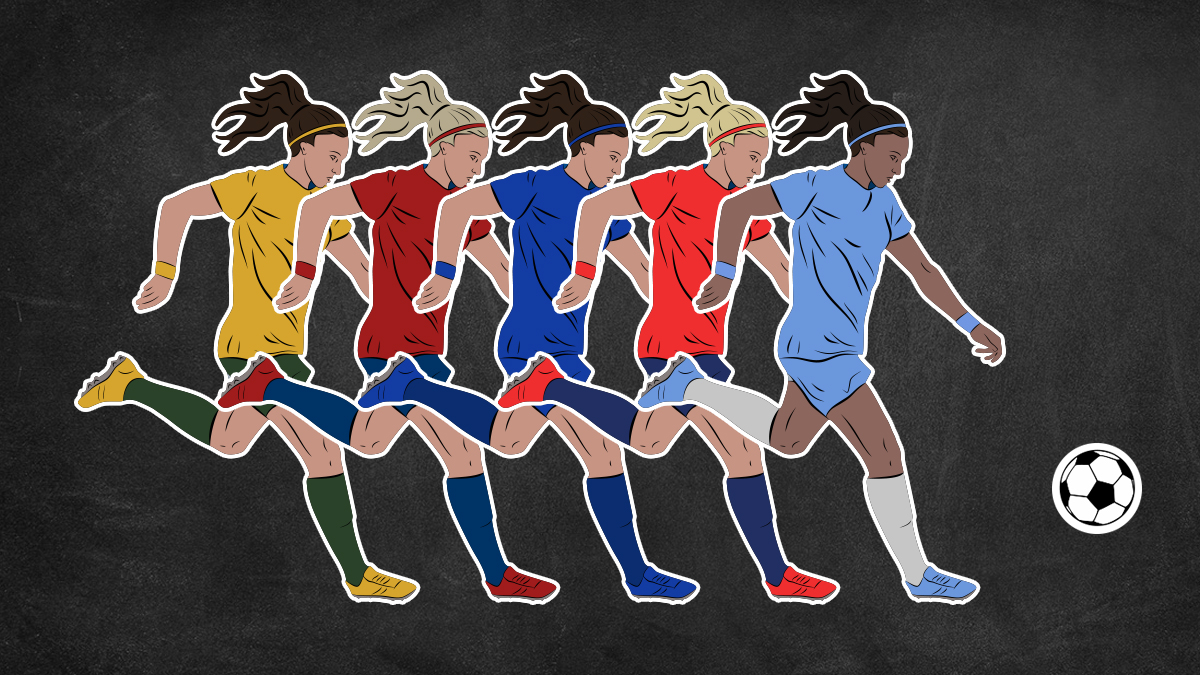Jersey numbers in soccer can sometimes be associated with what position a player occupies.
Initially introduced by the English Football League in 1939, players had to wear certain numbers designated to their respective positions. And though the rules behind those have altered throughout the decades, a lot of modern football today is still influenced by history.
For example, U.S. women's national team star Alex Morgan plays the role of a No. 9. A No. 9 is largely responsible for scoring goals as the forward highest up the pitch, but Morgan is not obligated to wear that number. Rather, she sports No. 13.
Let’s take a look at what the jersey numbers 1-11 mean on the pitch ahead of the 2023 Women's World Cup in Australia and New Zealand:
Get DFW local news, weather forecasts and entertainment stories to your inbox. Sign up for NBC DFW newsletters.
No. 1
This position is usually occupied by the goalkeeper, who plays between the sticks and has a primary responsibility to prevent goals from being scored. Today, the best goalkeeper on a certain team is referred to as that team’s “No. 1” in a literal sense.
Top goalkeepers in 2023: Mary Earps (England), Ann-Katrin Berger (Germany), Chiamaka Nnadozie (Nigeria)
No. 2
Moving right up to the positions in front of the goalkeeper, the No. 2 kit was usually worn by a right-back, who played as a defender on the right-hand side of the field. The number-position combination here isn’t as common anymore.
Top right backs in 2023: Lucy Bronze (England), Ellie Carpenter (Australia), Ona Batlle (Spain)
No. 3
Switching to the left side, the No. 3 kit was usually worn by a left-back. You guessed it – they played as a defender on the left-hand flank. This also isn’t as common.
Top left backs in 2023: Fridolina Rolfo (Sweden), Selma Bacha (France), Katie McCabe (Ireland)
Nos. 4 and 5
These two could be interchangeable. The two center-backs playing directly in front of the goalie would typically wear Nos. 4 and 5. Both are still pretty common among players.
Top center-backs in 2023: Wendie Renard (France), Irene Paredes (Spain), Millie Bright (England)
No. 6
This one has evolved over time, but the No. 6 jersey refers to a defensive midfielder, also known as a holding midfielder. Their job is to protect the backline, retain the ball and recycle possession if need be.
Top defensive midfielders in 2023: Keira Walsh (England), Lena Oberdorf (Germany), Lia Walti (Switzerland)
No. 7
A No. 7 could play on either wing and help put in crosses into the box to feed strikers or score goals themselves.
Top left wingers in 2023: Lieke Martens (Netherlands), Guro Reiten (Norway), Lauren Hemp (England)
No. 8
A No. 8 plays in center midfield and occupies areas a little more advanced than a No. 6. They’re often called “box-to-box” midfielders because they’re adept at attacking and defending.
Top box-to-box midfielders in 2023: Lina Magull (Germany), Lindsey Horan (USA), Grace Geyoro (France)
No. 9
The player playing most advanced on the pitch in hunt for goals is a striker that is referred to as a No. 9, which is another hugely common one today.
Top strikers in 2023: Sam Kerr (Australia), Ada Hegerberg (Norway), Alex Morgan (USA)
No. 10
Compared to a No. 6 or 8, a No. 10 is usually known for their creative abilities in the advanced areas of the midfield, mostly as a passer, to generate assists to strikers and wingers. They're also capable of providing goals.
Top attacking midfielders in 2023: Alexia Putellas (Spain), Marta (Brazil), Jill Roord (Netherlands)
No. 11
Just like No. 7s, a No. 11 can also play on either wing and have to supply quality passes or shots in the attacking third.
Top right wingers in 2023: Sophia Smith (USA), Carolina Hansen (Norway), Kadidiatou Diani (France)



